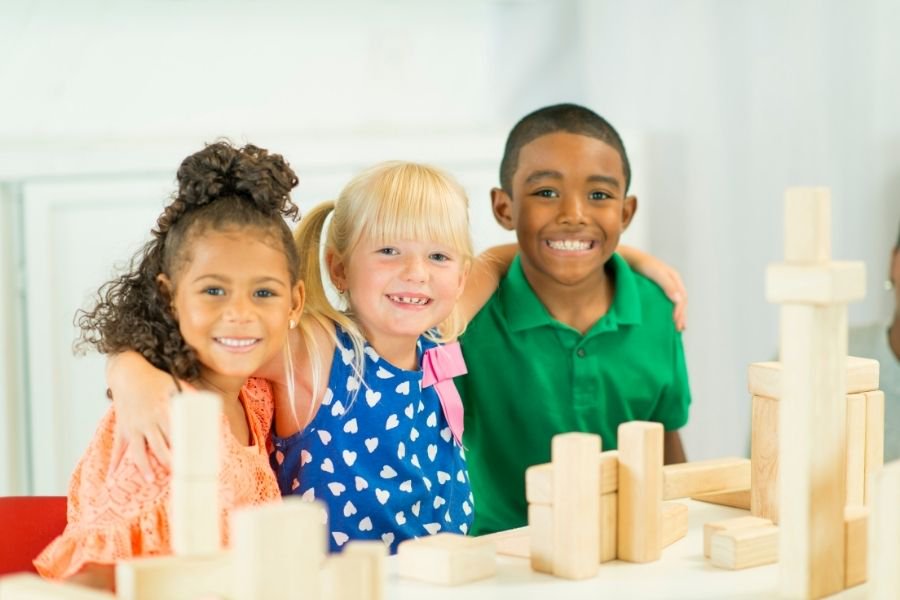
Image from Canva
In this article:
Ask any military family, and they’ll tell you their honest feelings about moving with kids. The answers will range from loving the new experiences each location brings to dreading saying goodbye to best friends every two to three years.
Moving is a part of military life, so it's mostly unavoidable and often challenging. But, today, there are more resources than ever for military kids and their families to take advantage of and ease the stress.
Whether you’re newbie movers or seasoned pros, there’s always room for improvement. So we’ve gathered the best tips, advice, and resources to help your military kids thrive.
Connect with Your Student Liaison Officer
Regardless of your service branch, one of your first calls should be to your incoming base’s Student Liaison Officers (SLO). The SLO is your go-to contact for detailed information on local school options, including public, private, and homeschooling choices. They can also offer support for the mental, emotional, and social elements of a PCS.
Depending on your PCS timeframe, your current base may have a SLO willing to help with your children’s transition into their new school. They can at least discuss the Interstate Compact (laws about how military children enroll and register from state to state). And, they could put you in touch with connections at your new location through the Youth Sponsorship Program, which helps incoming kids connect with current military kids at their new duty station.

Image from Canva
5 Ways to Help Your Kids Prepare Mentally, Socially, and Emotionally for a Move
As tough as it is packing, loading, and unloading during a historic heatwave, the mental and emotional challenges kids face during a PCS transition are often even harder. Of course, each child’s age and personality drive how they’ll react to the news that they’re moving, but overwhelmingly, the key to minimizing disruption is finding a positive communication method.
1) Kids are worried about things that apply to them directly, like bringing their toys, their new school, fitting in, and meeting new friends.
So, keep talking, asking questions, and sharing age-appropriate details about the move. The less mystery, the better. Encourage your kids to communicate openly by responding with non-judgmental answers and comments.
2) Even if you're unhappy about moving, it's up to you to keep up the positive attitude in front of the kids (for the most part).
If you’re anxious and upset, your kids will follow your lead. It’s okay, however, to share some concerns about the PCS so they know you relate to their situation. If you have strong, unmanageable negative feelings, talk with your spouse, friends, or a mental health professional to help you through the process.
3) Saying goodbye to friends, teachers, and caregivers is an important part of moving.
Schedule time to find special ways to say goodbye (or see you again later!), whether it’s an official going away party, a trip to the ice cream shop, or a pre-planned phone call. Keep in mind that your child might not want a big emotional event, so talk about how they’d like to say goodbye. You should also help your kids find ways to keep in touch with their old friends if they want to.
4) Listen to your kids when they talk about the PCS.
Sometimes, as a parent, it's helpful just to listen. But, if you begin to hear or see behavior that might need mental health support, don’t dismiss your gut feelings. You can start your mental health search with Military OneSource.
5) Most of all, have patience and let your kids work through the change on their timeline in a healthy way.
As adults, we know that things usually work out just fine, but with little experience to guide their process, it can take children longer to adjust.
Use this list as a convenient round-up for helpful and trusted military kid PCS resources.
6 Ways to Physically Prepare for the Move
The act of moving helps kids work through their emotions. Little kids find solace knowing they get to pack their favorite toys themselves, while big kids have the advantage of the internet to help them investigate new schools and hobbies.

Image from Canva
1) Ask your kids for ideas about what they'd like to do before they leave, during the move, and after they arrive.
You might need to finish your bucket list items at your current duty station. Plan a fun vacation or activities along the travel route, like amusement and national parks, to ramp up the excitement. Sightsee in your new home town as soon as possible (take a break from unpacking!) to start making new memories.
2) Let your kids help during the move, so they have a little control in a chaotic situation.
They can help decide what to pack or donate, how to decorate their new room, or help you pack the family pet’s belongings.
3) Create checklists for your kids to help them feel in control of the move.
They can be as simple as “Pack Your 5 Favorite Toys” to as in-depth as “Research 3 New Dance Studios.” As a family, you can also write a checklist for the next perfect house, including everyone’s top pick, like a big backyard or space for a media room.
4) With your kids by your side, check out their new schools online.
For the young ones, talk about the new mascot, look at pictures of the playground equipment, and plan to take advantage of any pre-back to school meetups. Your older kids will be more interested in helping find a new school that connects with their interests or specializes in programs like STEM, music, or art. They’ll also want to dig into after-school clubs, sports, and academic programs like IB and AP classes.
If you’re homeschooling, take a look at co-ops, extracurricular activities, or homeschooling groups together.
5) Continue your child's favorite activities after arriving in your new city.
Whether it’s ice skating, dance, robotics class, or rowing, show them the options in your new neighborhood so that they can connect with like-minded friends as soon as possible. They might surprise you and want to try something new. If your family prefers military-affiliated youth and teen programs, check out Military OneSource’s guide to fun and inexpensive programs.
6) Once you open most of your moving boxes, attempt to put the children's routine back in order, especially for the youngest ones.
They thrive on scheduled meals, nap times, baths, and bedtime stories.
As challenging as moving is physically, your family might be thrilled to be on your way—not every PCS is unwanted or dreaded. Hopefully, you’ll have some excitement and enthusiasm to look forward to, but know that it's normal if there's resistance. Now, you have many ways to help your children cope with the transition; you’ll have to tailor to each child which methods work best.
By Dawn M. Smith

.jpg)
back to top